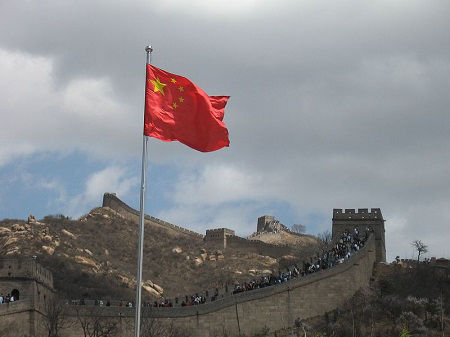The flag of China consists of a red field with five golden stars in the canton (top corner nearest to the flag hoist). One of the five stars is larger than the other four, with the four smaller stars sitting in a semi circle surrounding the larger star. The red of the Chinese flag represents the revolution whilst the five stars represent the unity of the people of China under the leadership of the Communist Party of China. The flag of China was adopted on 27 September 1949 and was first hoisted by the People's Liberation Army in Tiananmen Square, Beijing on 1 October 1949 at a ceremony formally announcing the establishment of the People's Republic of China.
The flag of China is also known as the "Wu xing Hongqi" (meaning "five starred red flag"). The flag's dimensions are 2:3.
From 15-26 July 1949, a notice was published in various newspapers across China calling for submissions of designs for a proposed new national flag of China. The requirements were set out as being:
- Chinese characteristics;
- Power characteristics;
- The shape should be rectangular and the length-breadth ratio should be 3:2; and
- The color should mainly be bright red.
The winning design came from Zeng Liansong, a Chinese citizen who was working in Shanghai at the time. The inspiration for the flag design is said to have come from the stars shining in the night sky and the Chinese proverb "longing for the stars, longing for the moon". The Chinese Communist Party was seen as the saviour of the Chinese people and is represented by the larger star, whilst the four small stars symbolise the four social classes of China as defined by Chairman Mao Zedong - the working class, the peasantry, the urban petty bourgeoisie and the national bourgeoisie.

The flag of China flies over the Great Wall of China
 WARNING - Flag Bazaar flags are lightweight and are not suitable for extended use on flagpoles
WARNING - Flag Bazaar flags are lightweight and are not suitable for extended use on flagpoles